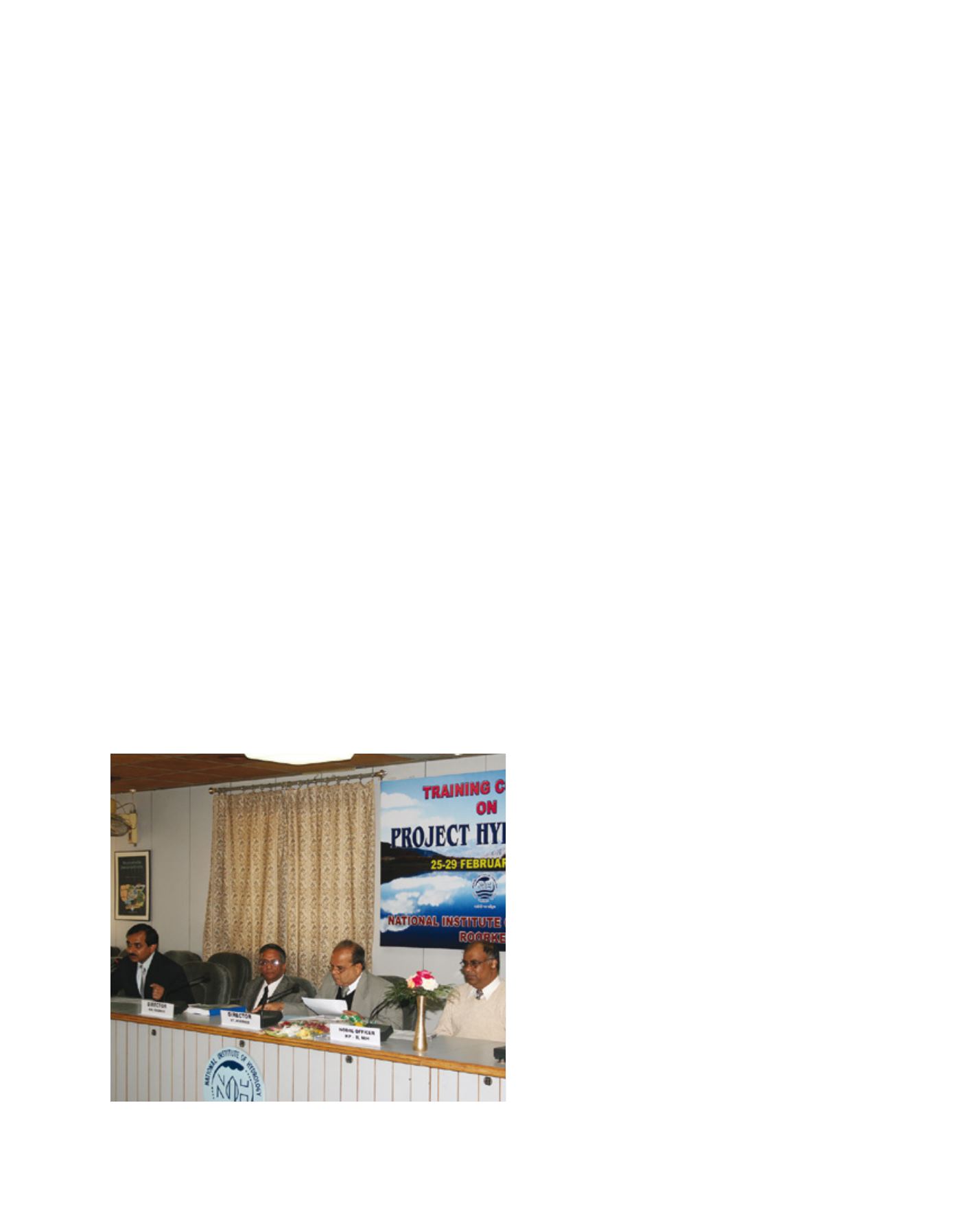

[
] 142
W
ater
E
ducation
and
I
nstitutional
D
evelopment
institutes (ITIs) and various data collecting organizations such as
CWC, IMD, CGWB, the Central Water and Power Research Station,
the Central Pollution Control Board and various state irrigation and
water resources organizations.
Continuing education programmes, summer courses and
refresher courses are being organized to provide an overview
of the new technologies and their applications in hydrology and
water resources. Such programmes are not only being organized by
academic institutions like IITs and engineering colleges, but also
by some of the central and state government organizations such
as the National Water Academy, CWC, Rajiv Gandhi National
Ground Water Training and Research Institute, CGWB, National
Institute of Hydrology, Central Water and Power Research Station,
IMD; Department of Hydrology, Department of Water Resources
Development and Management and National Remote Sensing
Centre. Courses are also organized by water and land management
institutes, technical teacher training institutes, staff training and
irrigation research institutes in states, the Karnataka Engineer Staff
Training College at Krishnarajasagar, the Engineering Staff College
at Nasik and other similar state institutes for training in-service
personnel in various areas of water resources.
The National Institute of Hydrology, Roorkee has made a remark-
able contribution through the organization of short-duration
training workshops and courses at Roorkee and in various states
for the transfer of technology, with an emphasis on the latest devel-
opments in hydrological analysis, design and software applications.
The institute has also organized a number of training programmes
for middle-level officers of the central and state organizations which
have participated in the World Bank funded Hydrology Project
Phase-I and Phase-II. The institute has provided training for a large
number of participants from central government, state govern-
ments and academic organizations under its technological transfer
and capacity building programmes. Some important areas covered
by the training programmes include observation, processing and
analysis of precipitation data; flood frequency analysis; groundwa-
ter modelling; flood routing and forecasting; reservoir
operation; urban hydrology; GIS and remote sensing
applications in hydrology; snow and glacier hydrology;
water quality modelling; and the assessment of climate
change impacts on water resources.
For senior level officers, refresher courses of one or
two days duration should be organized on specialized
topics of technological advancement. In such courses
the officers may learn about the latest developments in
computational facilities and the role and applications of
information technology. Some of the specialized topics
on which refresher courses could be organized include
hydrological design aids, software applications, infor-
mation technology applications for data management,
applications of GIS and remote sensing techniques,
modern tools for hydrological investigations and
analysis, and decision DSSs. This would be helpful in
making the officers aware of existing gaps in the prac-
tices being followed and the availability of improved
procedures and methodologies for the planning, design
and management of water resources. It would also help
to develop the required infrastructure facilities and
well-trained manpower for better development and
management of water resources.
In India a large number of regional languages are
in practice and in order to reach the masses, empha-
sis should be placed on activities that create public
awareness in people’s own languages along with Hindi
and English. Pamphlets on water awareness should be
prepared in different languages and public awareness
should be created in a well-planned and coordinated
manner. Video films should be prepared on topics of
public interest, and these should be screened at large
gatherings. In India, the literacy rate of women is quite
low, so women’s participation in the public aware-
ness programmes should be given due emphasis. The
message of the importance of water and its intercon-
nectedness with the environment around us, and all
that the various organizations in the country are doing
in this context, needs to be imprinted in the minds of
upcoming generations. Effective programmes must
start in the elementary schools and continue through
secondary and higher secondary schools. A participa-
tory approach should be adopted to making the people
of various sections of society aware about the different
issues of water resources management. Mass communi-
cation programmes should be launched using modern
methods of communication to educate people about
water conservation and efficient utilization of water.
Capacity building should be perceived as the process
whereby a community equips itself to become an active
and well-informed partner in decision-making. The
process of capacity building must be aimed at both
increasing access to water resources and changing the
power relationships between stakeholders. Capacity
building is not only limited to officials and technicians,
but must also include the general awareness of the local
population regarding their responsibilities in the sustain-
able management of water resources. Policy decisions in
Short training workshops and courses are emphasizing the latest developments in
hydrological analyses, design and software applications
Image: National Institute of Hydrology


















